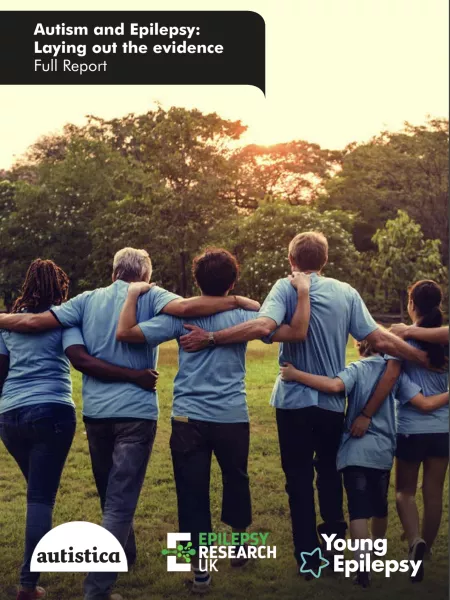Rates of co-occurring epilepsy in autistic people are much higher than in the general population. Knowledge of factors contributing to the co-occurrence of both conditions can enable health, educational, mental health and neurodisability services to more effectively identify and support autistic people with epilepsy as well as their families.
Despite sharing some common mechanisms, autism and epilepsy remain virtually unstudied in combination.
This report, developed in partnership with Autistica and Epilepsy Research UK, highlights the urgent need for better support and understanding for those living with both autism and epilepsy.
Key Findings
1. Risk Factors
- Learning disability is the strongest and most consistent risk factor for having both conditions.
- Other associated factors include:
- Older age
- Behavioural or psychiatric conditions
- Female gender
- Increased injuries and accidents
- Developmental regression
2. Lived Experience
- This is the first study to explore the lived experiences of autistic people with epilepsy.
- A Patient and Public Involvement (PPI) group identified 18 key themes, including:
- Lack of support during diagnosis and assessment
- Poor integration between autism and epilepsy services
- Misunderstanding from professionals and family
- Negative experiences in education
- Challenges with medication and sleep
- Emotional and economic impact on families
3. Economic Impact
- There is very limited research on the financial cost of having both conditions.
- Existing studies (all from North America) show increased healthcare costs but lack detail on outcomes.
- Families report significant economic strain, including reduced employment opportunities and increased caregiving responsibilities.
Recommendations
Improving Support
- Make hospital visits more autism-friendly
- Increase autism awareness among epilepsy professionals
- Screen for autism in epilepsy services and vice versa
- Provide access to evidence-based therapies for co-occurring conditions
Future Research Needs
- Explore employment challenges and long-term costs
- Identify effective economic interventions
- Conduct more qualitative research with affected individuals and families
This report reinforces our mission to ensure that young people with epilepsy—especially those with additional needs—are seen, heard, and supported. We will continue to advocate for integrated care, inclusive education, and targeted research to reduce inequalities and improve outcomes.



